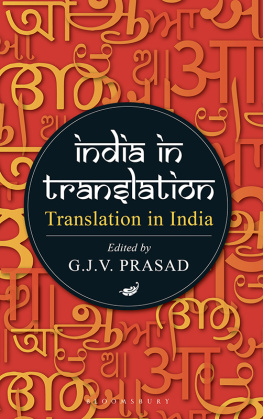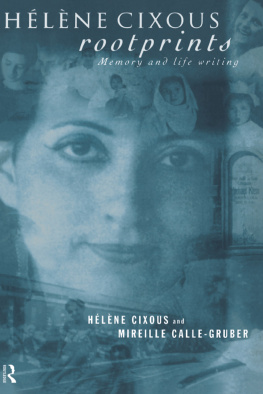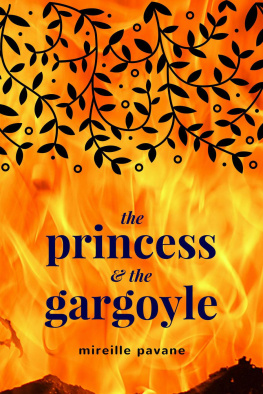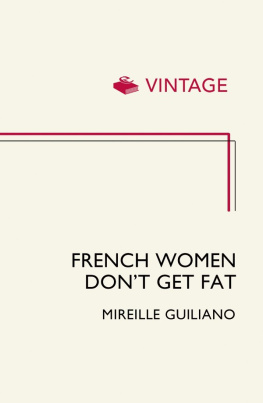Mireille Gansel - Translation as Transhumance
Here you can read online Mireille Gansel - Translation as Transhumance full text of the book (entire story) in english for free. Download pdf and epub, get meaning, cover and reviews about this ebook. year: 2017, publisher: The Feminist Press at CUNY, genre: Detective and thriller. Description of the work, (preface) as well as reviews are available. Best literature library LitArk.com created for fans of good reading and offers a wide selection of genres:
Romance novel
Science fiction
Adventure
Detective
Science
History
Home and family
Prose
Art
Politics
Computer
Non-fiction
Religion
Business
Children
Humor
Choose a favorite category and find really read worthwhile books. Enjoy immersion in the world of imagination, feel the emotions of the characters or learn something new for yourself, make an fascinating discovery.

- Book:Translation as Transhumance
- Author:
- Publisher:The Feminist Press at CUNY
- Genre:
- Year:2017
- Rating:5 / 5
- Favourites:Add to favourites
- Your mark:
- 100
- 1
- 2
- 3
- 4
- 5
Translation as Transhumance: summary, description and annotation
We offer to read an annotation, description, summary or preface (depends on what the author of the book "Translation as Transhumance" wrote himself). If you haven't found the necessary information about the book — write in the comments, we will try to find it.
Translation as Transhumance — read online for free the complete book (whole text) full work
Below is the text of the book, divided by pages. System saving the place of the last page read, allows you to conveniently read the book "Translation as Transhumance" online for free, without having to search again every time where you left off. Put a bookmark, and you can go to the page where you finished reading at any time.
Font size:
Interval:
Bookmark:
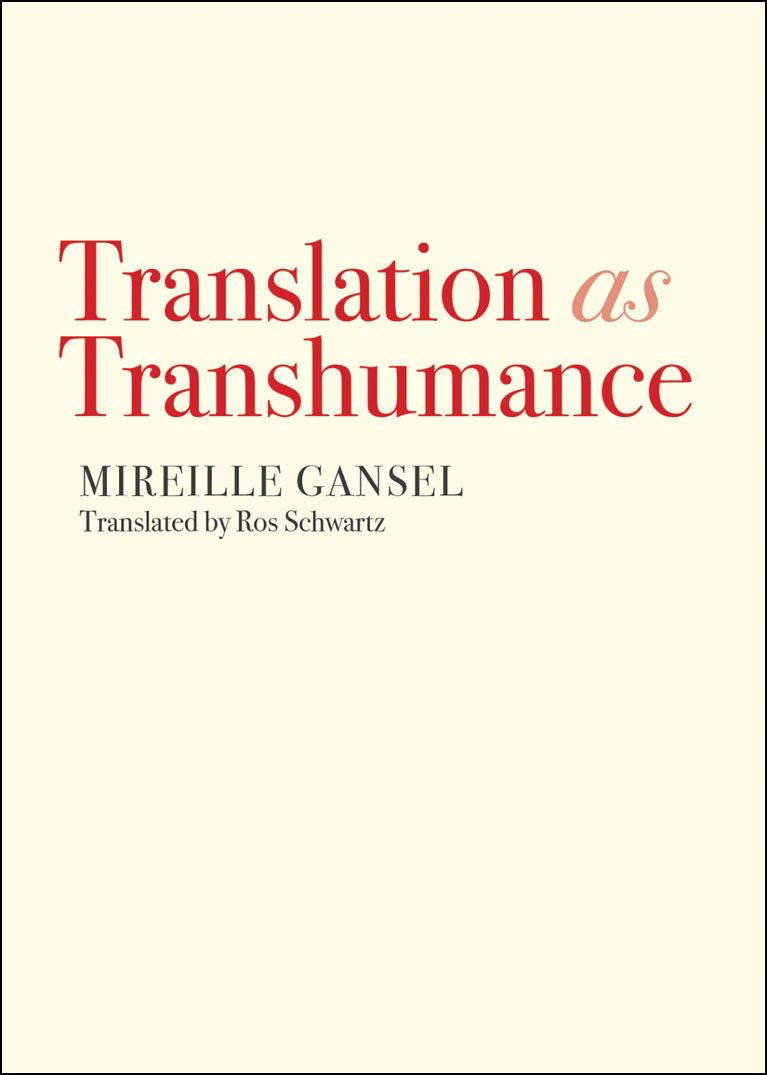


Photograph of the shepherd Ren Alcazar taken by Patrick Fabre in 2007 in the Gorges du Bachelard, France.

Published in 2017 by the Feminist Press
at the City University of New York
The Graduate Center
365 Fifth Avenue, Suite 5406
New York, NY 10016
feministpress.org
First Feminist Press edition 2017
Copyright 2012 by ditions Calligrammes
Translation copyright 2017 by Ros Schwartz
Foreword copyright 2017 by Lauren Elkin
Traduire comme transhumer was originally published in France by ditions Calligrammes in 2012.
All rights reserved.
This work received the French Voices Award for excellence in publication and translation. French Voices is a program created and funded by the French Embassy in the United States and FACE (French American Cultural Exchange). French Voices Logo designed by Serge Bloch.

This book was made possible thanks to a grant from New York State Council on the Arts with the support of Governor Andrew Cuomo and the New York State Legislature.
No part of this book may be reproduced, used, or stored in any information retrieval system or transmitted in any form or by any means, electronic, mechanical, photocopying, recording, or otherwise, without prior written permission from the Feminist Press at the City University of New York, except in the case of brief quotations embodied in critical articles and reviews.
Ros Schwartz would like to thank Natasha Lehrer for her sensitive and insightful editing and for her deep commitment to this project.
First printing November 2017
Cover and text design by Drew Stevens
Library of Congress Cataloging-in-Publication Data
Names: Gansel, Mireille, author. | Schwartz, Ros, translator.
Title: Translation as transhumance / Mireille Gansel; translated by Ros Schwartz.
Other titles: Traduction en transhumance. English
Description: New York: The Feminist Press at CUNY, [2017]
Identifiers: LCCN 2017012003 (print) | LCCN 2017038296 (ebook) | ISBN 9781936932085 (ebook)
Subjects: LCSH: Translating and interpreting. | Gansel, Mireille--Translations into English. | BISAC: LITERARY COLLECTIONS / Essays. | BIOGRAPHY & AUTOBIOGRAPHY / Personal Memoirs. | BIOGRAPHY & AUTOBIOGRAPHY / Cultural Heritage. | BIOGRAPHY & AUTOBIOGRAPHY / Women.
Classification: LCC P306 (ebook) | LCC P306 .G27413 2017 (print) | DDC 418/.02--dc23
LC record available at https://lccn.loc.gov/2017012003
To Jean Halprin ZL a man of peace and light
Native language is not a set of grammar rules and regulations, it is the childs spiritual nourishment.
Janusz Korczak
CONTENTS
In this beautiful memoir of a life lived in and through translation, Mireille Gansel defines the process of bringing words from one language to another as a kind of seeking, tied to the land. Transhumance refers to the seasonal movement of a shepherd and his flock to another land, or humus. It is the opposite of settling and farming: it is a form of nomadism, a search for richer grass, and it provides an apt image for her own trajectory as a translator.
Gansel was drawn to the German spoken by her family, reduced to a little circle of survivors after the Holocaust. That Gansel works on German makes her particularly attuned to the movement of and within languages. Just as Adorno said there could be no poetry after Auschwitz, Gansel suggests here that the German language itself is utterly changed after the Shoah. This is the German that has been punctuated by exiles and passed down through the generations, from country to country, like a violin whose vibratos have retained the accents and intonations, the words and expressions, of adopted countries and ways of speaking. Translation as Transhumance is a family history of languages and exiles, asking: What does a language retain of the violence it has been used to commit? How do you bridge the abyss created in the German language by the barbed-wire fences and watchtowers of history? How do you reach the shores of a language of the soul? The twentieth century is a bloody field, but how can we move away from it? What kinds of bloody footprints do we track elsewhere? Memory and history are the translators terrains.
There are physical boundaries, too. The Berlin Wall stands between Brecht and Gansels rendering of his work; she is not only a shepherd with a flock but a smuggler, slipping language past the guards. Foolish are the leaders who build walls around their countries, thinking they can keep the desired in and the feared out; doomed to fail are those who try to police or purify a language. Wherever totalitarianism or censorship takes hold, it is the role of the translator to find a way up and over the wall.
The conquering of the Czech lands by the German language affects Gansels translations of an East German poet, Reiner Kunze, whose work she tells us was deeply influenced by Czech poetry. She describes the problem of rendering a phrase, sensibel wege, in French, first rendering the wege, paths, as fragile, then, years later, retranslating them as sensitive. Just as a piece of writing can never be finished as long as its writer is alive to revise it, or as long as scholars are interested in accounting for its drafts and revisions, so a translation can be thought of as provisional, momentary. In his own wonderful book on translating Rilke, William Gass writes that what is produced when the translator has finished his work is a reading enriched by the process of arriving at it, and therefore, really, only the farewells to a long conversation; this puts me in mind of Walter Benjamins description of the work as the death mask of its conception. For Gansel the farewells are temporary, and the death mask can yawn back to life. At that moment, Gansel writes, I understood translation both as risk-taking and as continual re-examination, of even a single worda delicate seismograph at the heart of time.
We move from Germany to North Vietnam, where Gansel journeyed during the war, to confront McNamaras declaration that the US would bomb em back to the stone age with the testimony of a culture that was several thousand years old. They would publish for the first time in French an anthology of Vietnamese poetry, as an answer to McNamaras threat. In Vietnam, Gansel learned to play the monochord to capture the cantillation of Vietnamese poetry, to help her go beyond clever French poetic devices of alliteration and onomatopoeia into a vast and entirely different kind of poetrycapturing in French the wordless voice of the Vietnamese. She describes her process of moving from a word-for-word translation to a more nuanced framework of meanings and clarifications, to a third stage, in which she would arrange all the notes, sounds, images, and narratives in such a way as to recreate the words, structures, and rhythms of an entire oral heritage.
And we move, we transhume, again, from North Vietnam to the South of France, where Gansel asks Ren Char for some of his poems to give to her Vietnamese mentor to translate. On the road away from Chars home, the idea of translation as transhumance occurs to Gansel, who reflects on the long, slow movement of the flocks to distant places, in search of the greenest pastures, the low plains in winter and the high valleys in summer:
Font size:
Interval:
Bookmark:
Similar books «Translation as Transhumance»
Look at similar books to Translation as Transhumance. We have selected literature similar in name and meaning in the hope of providing readers with more options to find new, interesting, not yet read works.
Discussion, reviews of the book Translation as Transhumance and just readers' own opinions. Leave your comments, write what you think about the work, its meaning or the main characters. Specify what exactly you liked and what you didn't like, and why you think so.



